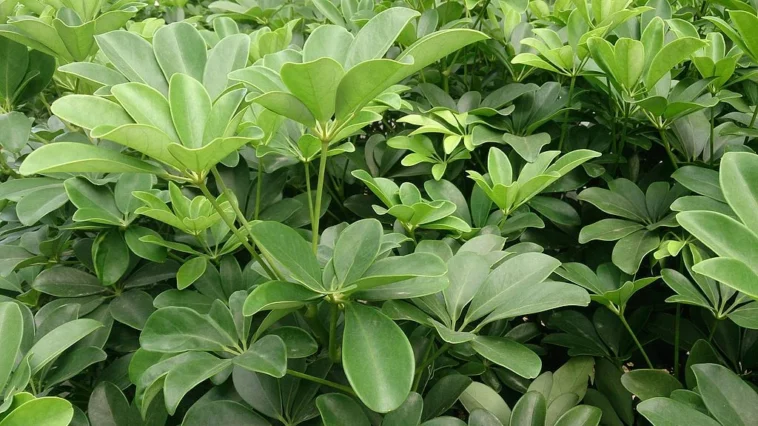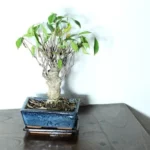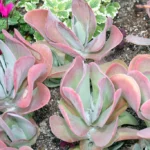Table of Contents
Schefflera Plant Care Information
Schefflera genus is a group of flowering plants native to Taiwan. These tropical plants make lovely shrubs outdoors, but they are beautiful indoors also.
They grow upwards like trees with clusters of deep green elongated leaves, sometimes varied with shades of yellow. The size that the plant will grow depends on the exact species.
Essential Schefflera Plant Care
The schefflera is a popular houseplant that comes in a variety of forms. However, two of the best-known kinds are called the dwarf tree and the umbrella tree.
These plants are wonderful decorative additions to a home with their deep green and yellow leaves, but this is not the only reason they are so popular. Schefflera plant care is minimal, making it possible for almost anyone to provide for its basic needs.
What is the required schefflera plant care?
While these plants do not need much in terms of care, they do have some minimal requirements. Two of the most significant factors are sunlight and water.
Other elements impact its health and longevity also. Here is a look at the needs of these plants.
Light Requirements
Schefflera plant care includes providing the foliage with medium indirect light. If the plant is becoming floppy or leggy, it is not getting enough sunlight.
However, putting the foliage in direct sunlight that is too hot will scorch the leaves.
Temperature Requirements
These plants can tolerate a wide variety of temperatures – anywhere between 1-40 degrees Celsius (35-105 degrees Fahrenheit).
The optimal temperatures for their growth and health are between 18-32 degrees Celsius (65-90 degrees Fahrenheit).
Humidity Requirements
The foliage can adapt to virtually any humidity but grows best when it is moderate.
Water Requirements
The plant must only be watered when the potting soil is dry. Overwatering regularly can kill the plant. Signs of being overwatered include falling yellowed leaves.
Soil Requirements
The genus prefers well-draining soil as this helps prevent root rot. One particular mixture that tends to work well is a combination of standard garden soil mixed with sphagnum moss and sand.
Fertilizer Requirements
If you wishe, they can feed the plant half-strength water-soluble fertilizer once a year, but fertilizer is not necessary for this genus.
Extra Tips For Schefflera Plant Care
The basic requirements for schefflera plant care are very minimal, but some extra tips can be helpful.
The following details can assist you in treating pests and diseases, and also with pruning and propagation if needed.
Pests and Diseases
These plants are not usually bothered by issues with insects or illnesses. That said, there are a few that may arise and are often caused by overwatering.
- Mealybugs: The small creatures are attracted to moisture. They feed off the stems and leaves as a form of nourishment, causing damage to the plant. These pale-colored, segmented insects can be killed individually by dabbing them with rubbing alcohol. Larger infestations may be treated with neem oil or other forms of insecticides. Prevention includes washing the leaves with warm soapy water but also by avoiding too much moisture in the potting mix.
- Spider Mites: These little spiders are red, white, or black. They, too, are attracted to the dampness. The creatures leave a dusty covering over the leaves, which is actually their webs. The same type of insecticides and preventative measures can be used with these pests as with the mealybugs.
- Root Rot: This fungal disease is typically caused by overwatering or poor drainage. In most cases, the plant requires repotting into fresh soil and a new pot. Fungicide can be applied to help treat the disease and prevent it from spreading.
Pruning
Pruning can be a vital part of schefflera plant care and is done for a few reasons. One common purpose is to remove leggy stems, another to remove any damaged stems or leaves.
It is also possible to prune the tree to encourage it to grow in a particular shape or to trim its height to something more feasible for an indoor space.
Pruning is a simple task with these plants. If you see a stem or stalk that is out of place, they just need to cut it down.
The stems may be trimmed to within three or four inches left of their total length. Sterile sharp scissors or pruning shears may be used for this process.
Propagation
Propagating these trees is so easy that it is often done to create a collection of plants for the house or to give as gifts. The cutting grows into an exact clone of the mother without any chance of mutation. If the mother is a healthy plant, the plantlet will be as well.
You are recommended to wear gloves during this process. To obtain the cuttings, you can cut a stem from the base of the mother using sharp, sterile scissors. The base of the stem should be wrapped in a damp paper towel.
The leaves need to be cut in half horizontally. This snipping prevents the cutting from losing as much moisture during the rooting process.
A six-inch pot should be filled with potting mix and a two-inch hole created in the soil. After dipping the base of the stem in rooting hormone, it can be placed in the hole in the potting mix. The hole must then be filled in and the soil patted down around the cutting.
After being watered, the pot needs to be located in a bright area, but where it is not in direct sunlight.
Within a few weeks, the stem will start to produce roots. Once the top of the cutting starts to develop sprouts, these new growths can be trimmed to encourage faster development.
Propagating such plants can also be done through seeds. Individuals who already have these plants usually prefer cuttings so they know what quality of foliage will grow.
Toxicity
Schefflera plants are toxic to humans and animals. It is advised to keep them out of reach of children and pets.
Ingesting parts of the plant may cause nausea, vomiting, and respiratory difficulty. Contact with plant sap may cause skin irritation.
Mokkie, CC BY-SA 3.0 https://creativecommons.org/licenses/by-sa/3.0, via Wikimedia Commons


